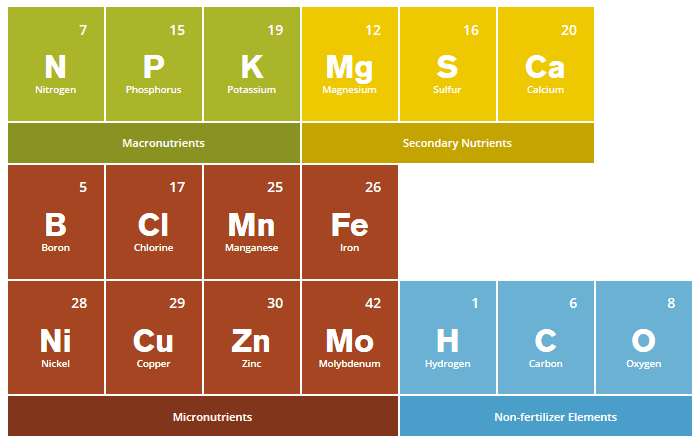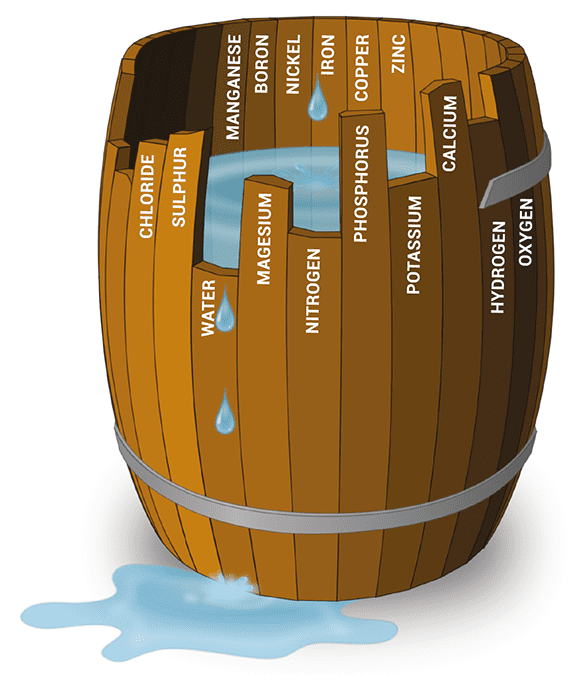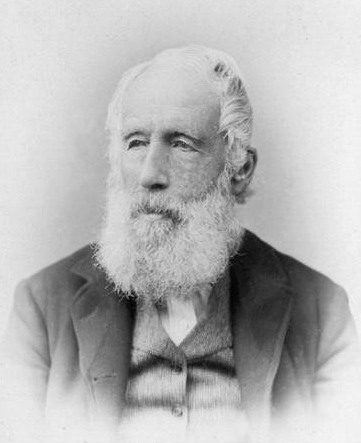The Periodic Table and Plant Nutrition Pioneers
2019 is the 150th anniversary of the Periodic Table of Chemical Elements. Developed by Dmitry Mendeleev, it has been one of the most important scientific tools for the development of modern chemistry, physics and biology.
The Periodic Table has allowed scientists to identify and understand the earth’s elements, classify them by type and predict their properties and appearances. Using it, biologists have also been able to pinpoint 17 elements that are essential to plants:

Plants need 17 essential elements to thrive and survive (image ©Mosaic)
These elements, known as nutrients, are the building blocks of plant life and making sure crops get enough of them, by using fertilizers to supplement what’s already in the soil as required, is at the heart of agriculture.
While the Periodic Table a momentous achievement in itself, Dmitry Mendeleev is only one of the many scientific pioneers whose works have contributed to the development of modern farming and fertilizers.
Here’s a look at three other scientific innovators who have played key roles in the development of modern plant nutrition:
Justus von Liebig (1803-1873)
Sometimes referred to as the “father of the fertilizer industry”, German chemist Justus Freiherr von Liebig was the first person to understand the need for nitrogen-based fertilizer to grow the healthiest crops and correctly recognized ammonia as a source.
In addition to correctly identifying nitrogen, phosphorus, and potassium as essential nutrients for plant growth, Liebig observed that plants get the carbon and hydrogen they need from the atmosphere and water.

An illustration for Liebig’s law of the minimum for plant nutrition
Liebig also popularized the law of the minimum that stated that not getting enough of a single essential resource will limit plant growth, helping to show that although plants need different amounts of each nutrient, all of them are essential.
Sir John Bennet Lawes (1814-1900)

English agricultural scientist and entrepreneur John Bennet Lawes started investigating the effects of manures on plant growth in 1837 before starting a series of experiments on fields of crops on his estate in Rothamsted.
In 1842 he patented a technique for creating fertilizer by treating mineral phosphates with sulphuric acid which marked the birth of the modern fertilizer industry.
The field experiments that Lawes started on his estate continue to this day, called Rothamsted Research, and are one of the world’s longest running, continuously monitored agricultural research sites.
Fritz Haber (1868-1934) & Carl Bosch (1874-1940)
Although their important role had been recognized since the 19th century, nitrogen fertilizers largely remained limited to natural sources until the invention of the Haber-Bosch process (1908-1913) when the German Nobel prize winning chemists Fritz Haber and Carl Bosch developed an industrial process to create ammonia from atmospheric nitrogen.
Still the main source of nitrogen in fertilizers to this day, the Haber-Bosch process unlocked a huge source of nitrogen which was key to driving crop yields in the 20th century and continues to feed the world’s growing population today.
The Haber process
Daniel D. Dulek
The above are just some examples of the many scientists and agronomists who have helped to understand plant nutrition needs and create the modern fertilizer industry that is central to agriculture.
By applying fertilizers, and the essential 14 elements they contain, farmers are able to successfully grow food in a variety of different soils and climates. Here’s celebrating Dmitry Mendeleev’s system, the vital Periodic Table elements and the pioneering scientists that help to feed the world!

